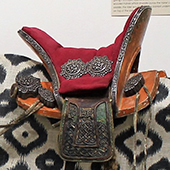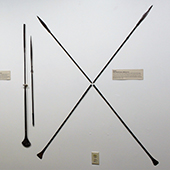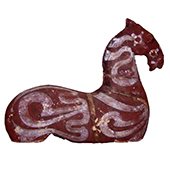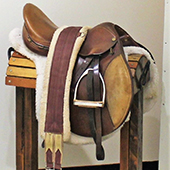Status and Symbolism

Horses are highly valued for the jobs they perform, but they are also valued for what they say about their owners. Keeping horses fed, healthy, and safe from predators can be very expensive. Like other costly pursuits, owning horses can be one way of signaling power and wealth in a society. Symbolism doesn’t stop with the just the horse! Displaying, decorating, and parading horses is common throughout the world. Costumes or ornaments are added to make horses appear more colorful, fearsome, or regal. Even when horses aren’t on display, objects made from their hair, hides, or bones also reflect this privileged status.
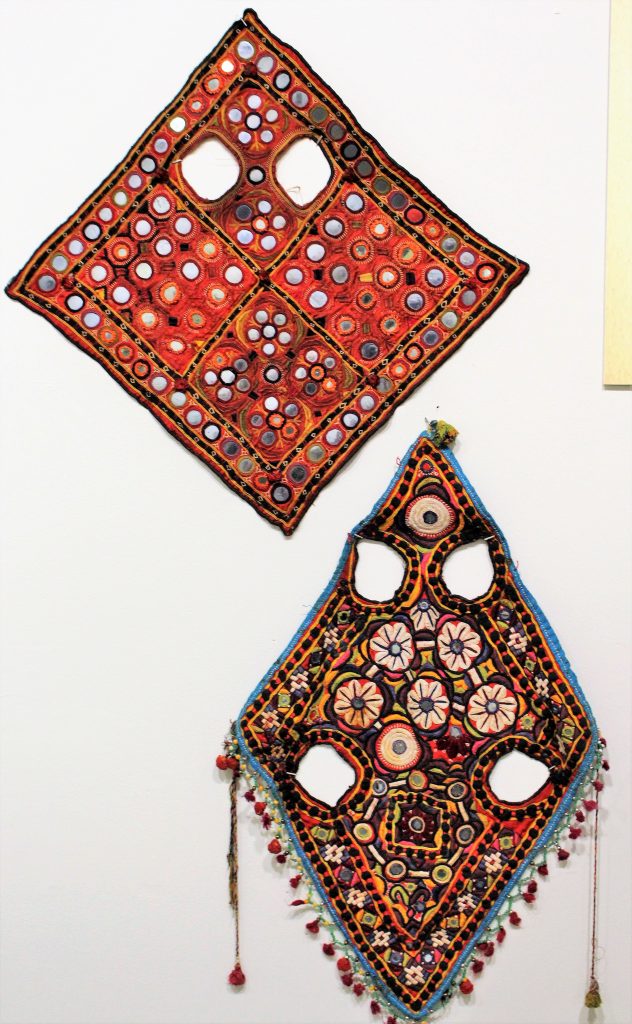
Costumes
Pakistan, Mid-20th Century, L2018.02.E.79-81
Grooms in South Asia often begin their wedding procession on horseback, in a ceremony called the Baraat. Both the horse and the groom wear embroidered covers, called sehra, with similar designs as part of the ceremony. This practice references the tradition in arranged marriages of the groom and bride not seeing each other’s face before the wedding.
Costume
Mexico, Mid-20th Century, 1993.09.E.029
Likely used during festivals and parades, this ornament fits onto a horse’s harness to accentuate the tail with additional tassels. Each tassel is constructed from multiple colors and lengths of horsehair. Many costumes incorporate beads and feathers to add color and contrast to make the horse even more visually striking.
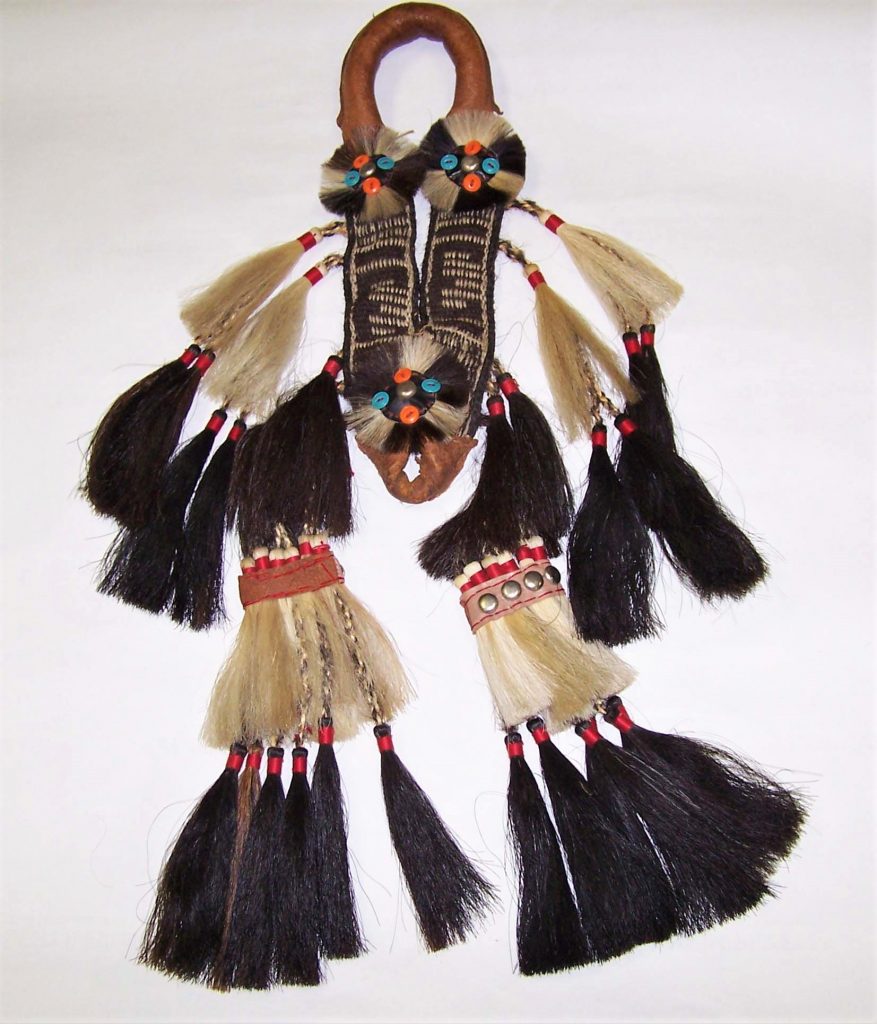
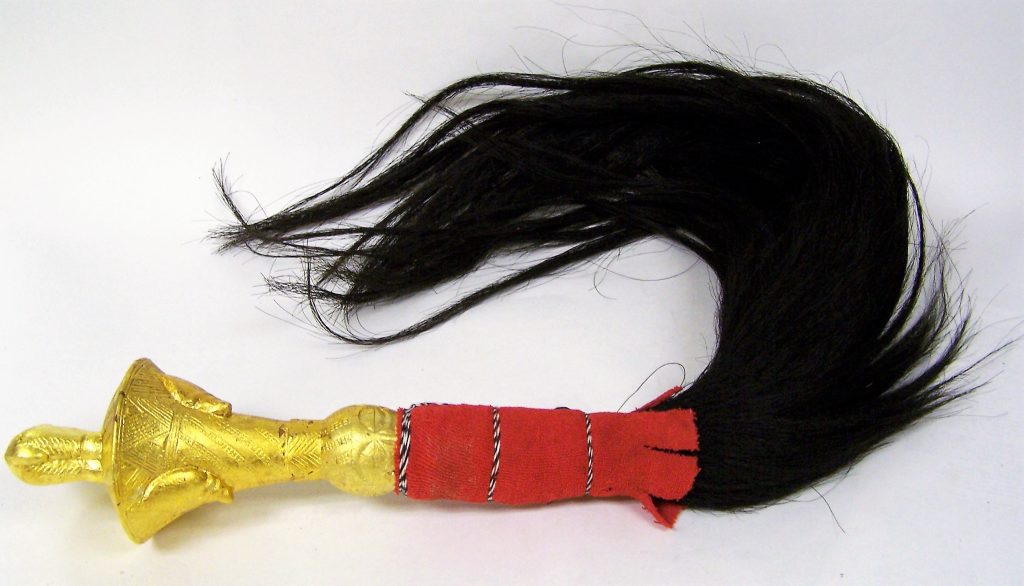
Fly Whisk
Ivory Coast, Late 20th Century, 1998.04.E.22
In most parts of West Africa, fly whisks are carried as status symbols to indicate someone’s rank in the political hierarchy. Fly whisks are brought out for ceremonial occasions, such as masquerades or royal speeches. This whisk features many high-status symbols: an elephant carved on the handle, extensive use of gold foil, and a whisk made from a horse’s tail.
Explore the other sections of this exhibit below
